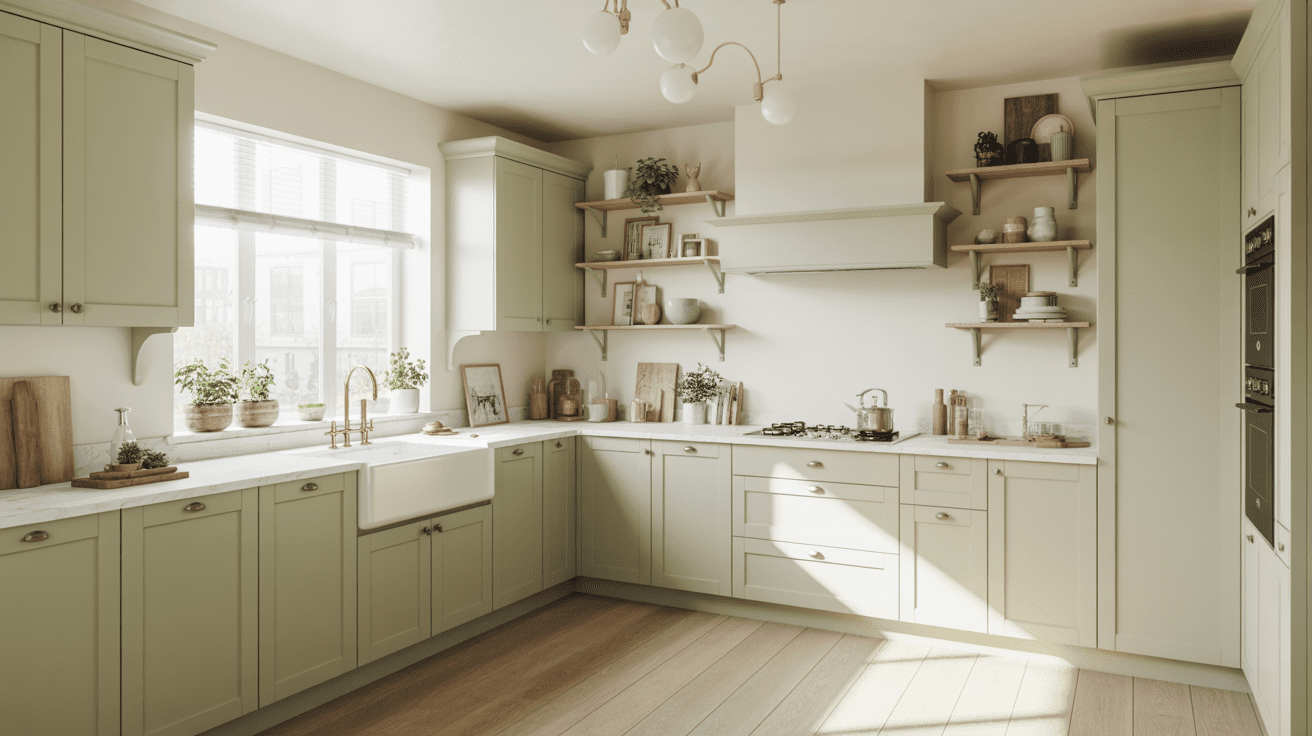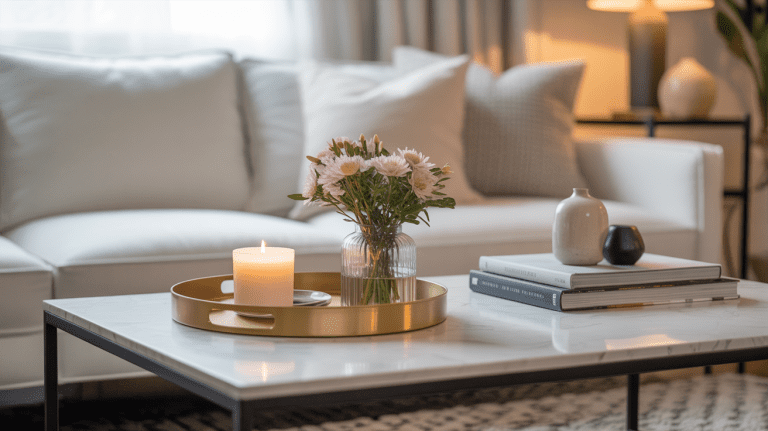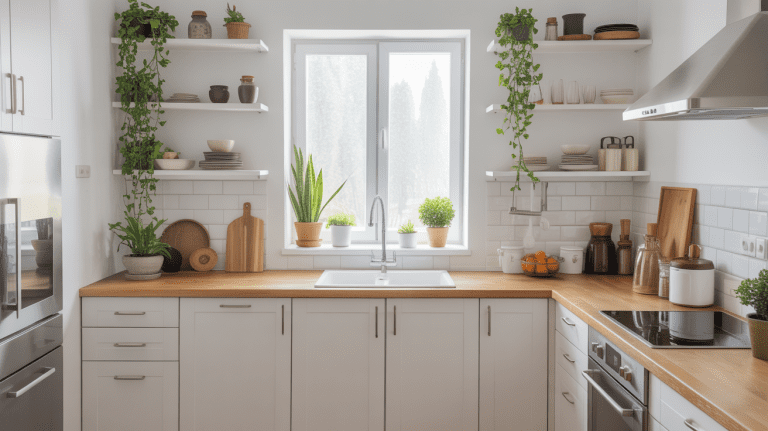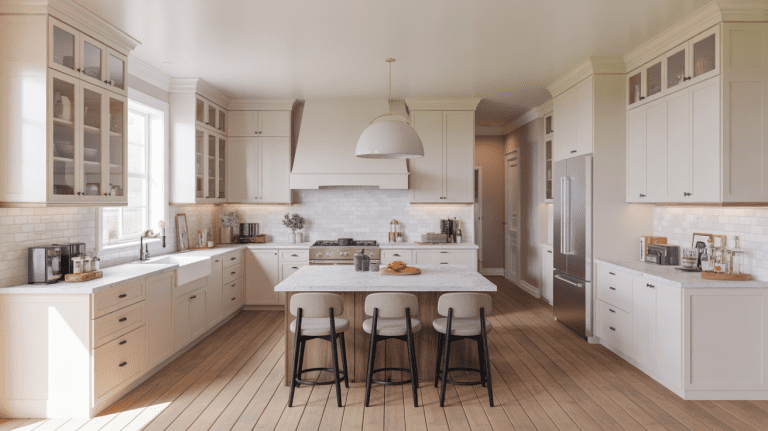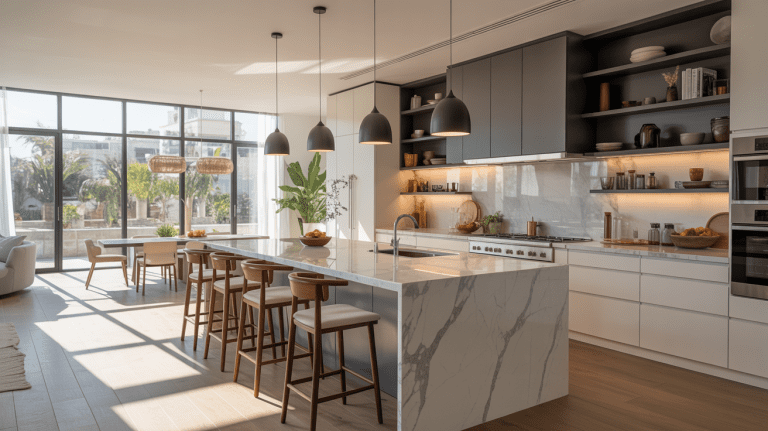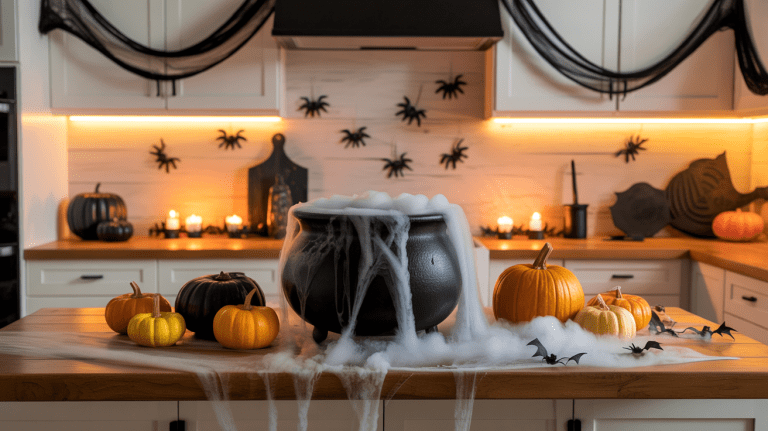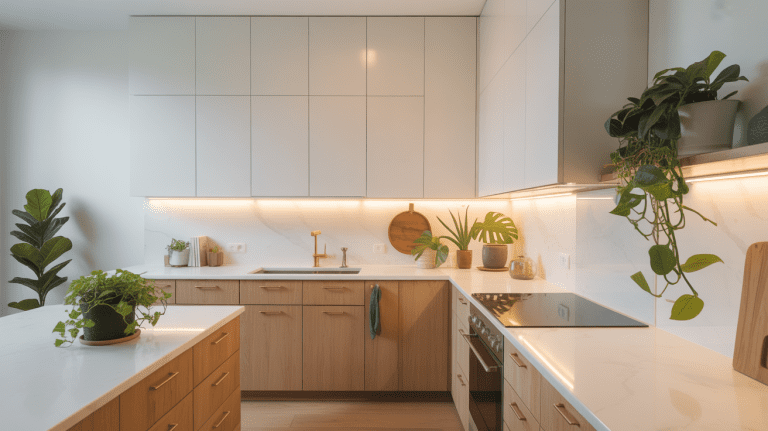Sage Green Kitchens: The Timeless Style That’s Always in Trend for Modern Homes
Sage green kitchens have become a lasting favorite for homeowners who want a calm and stylish space. This color combines natural warmth with timeless appeal, making it easy to fit into nearly any kitchen design. Its soft, muted tone adds depth without dominating the room, creating a balanced and welcoming atmosphere.
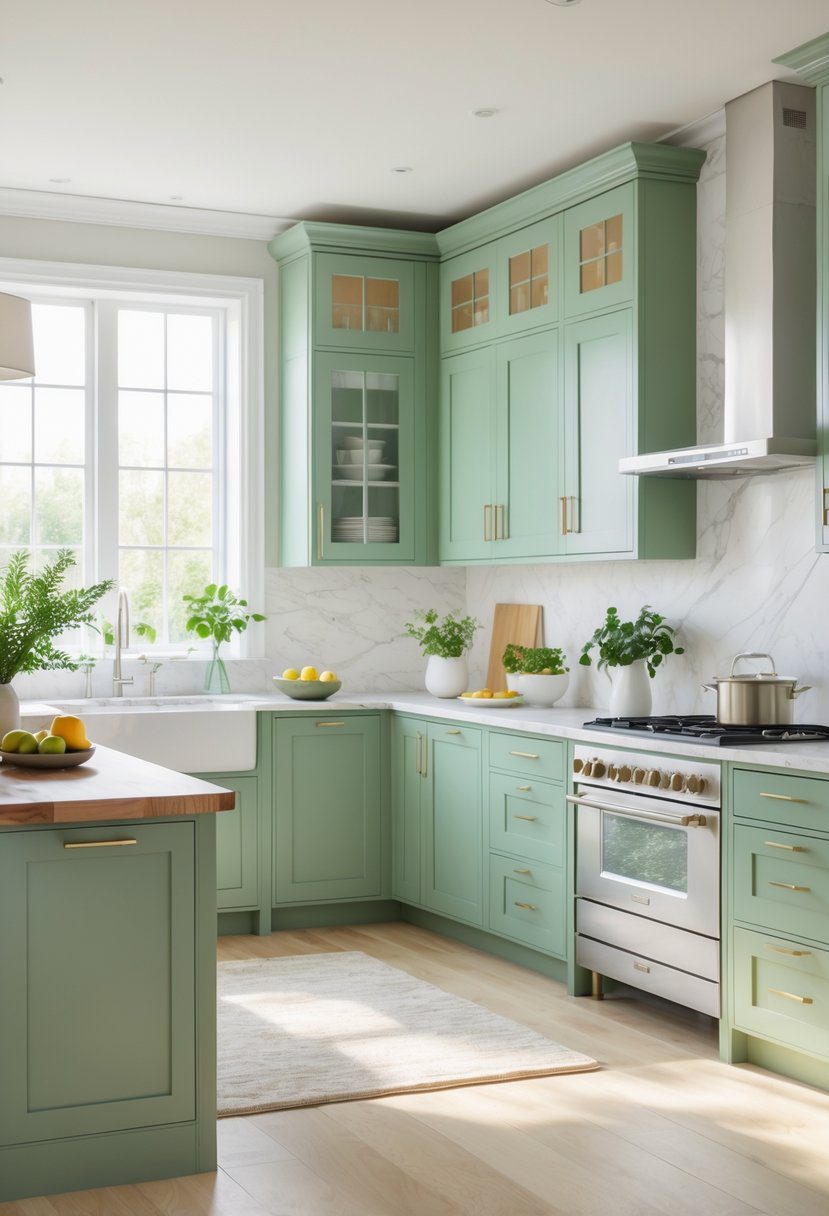
The versatility of sage green allows it to work well with many styles, from modern to rustic. It pairs beautifully with wood accents and neutral surfaces, offering a fresh look that feels both elegant and grounded. This makes it an ideal choice for those looking to refresh their kitchen without risking a trend that fades quickly.
By choosing sage green, individuals invest in a color that brings tranquility while supporting creative design choices. Its ability to blend with other shades and materials means a sage green kitchen can grow with changing tastes and styles, keeping the space relevant for years to come.
Key Takeways
- Sage green offers a balanced look that suits many kitchen styles.
- It enhances kitchens by pairing well with natural and neutral elements.
- The color maintains a calm, timeless charm that adapts over time.
Why Sage Green Kitchens Are Always in Trend
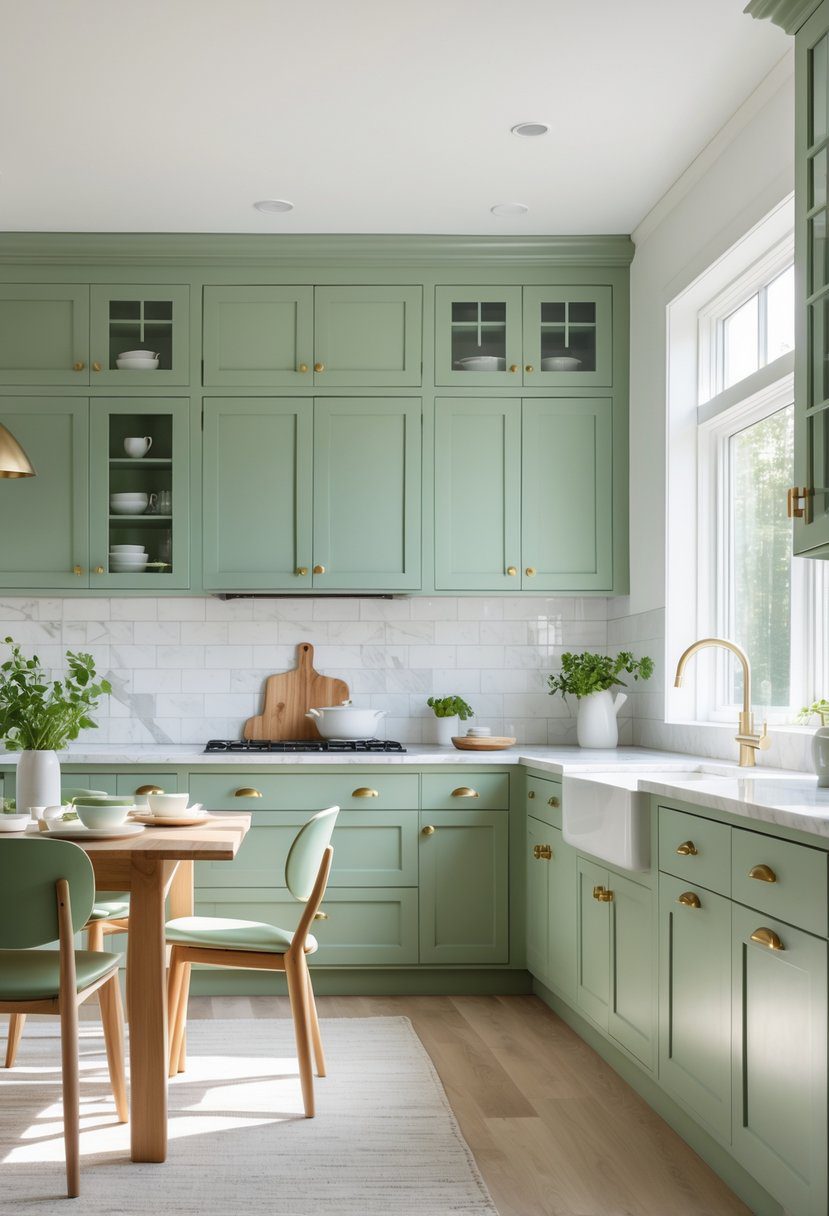
Sage green remains popular because it blends well with many design choices and creates a calm atmosphere. Its natural tone fits modern preferences without feeling too bold or flashy. It suits different homes from traditional to contemporary, making it a reliable choice for lasting style.
The Enduring Appeal of Sage Green
Sage green has a classic quality that doesn’t fade with trends. It is soft, muted, and earthy, which helps it avoid the harshness of brighter greens. This color adds warmth and charm without overwhelming a space.
Unlike more experimental colors, sage green balances subtlety and character. It works year-round and feels fresh in every season. The timelessness of sage green means kitchens painted or cabineted in this shade need fewer updates, saving time and money.
Psychology of Sage Green in Kitchen Design
Sage green brings a sense of peace and balance to a kitchen. It is closely linked to nature, which helps create a relaxing setting where people feel comfortable and calm. This feeling fits well with kitchens as places for gathering and making meals.
The color reduces stress and adds a soft, natural vibe without feeling cold or stark. It supports mental wellbeing and makes a kitchen inviting. This calm influence explains why many designers recommend sage green to encourage a soothing home atmosphere.
Versatility for Different Home Styles
Sage green adapts well across many kitchen styles. It pairs nicely with white countertops and wood accents in modern farmhouse kitchens, creating warmth and balance. It also works with traditional designs by adding a gentle, classic touch to cabinets.
Whether the kitchen is sleek and modern or rustic and cozy, sage green can fit seamlessly. It harmonizes with natural materials like oak or maple while also complementing metal fixtures. This flexibility lets homeowners personalize their space without clashing colors or finishes.
For more ideas, see how sage green kitchens blend style and comfort naturally. Explore sage green kitchen ideas and benefits.
Designing Your Ideal Sage Green Kitchen
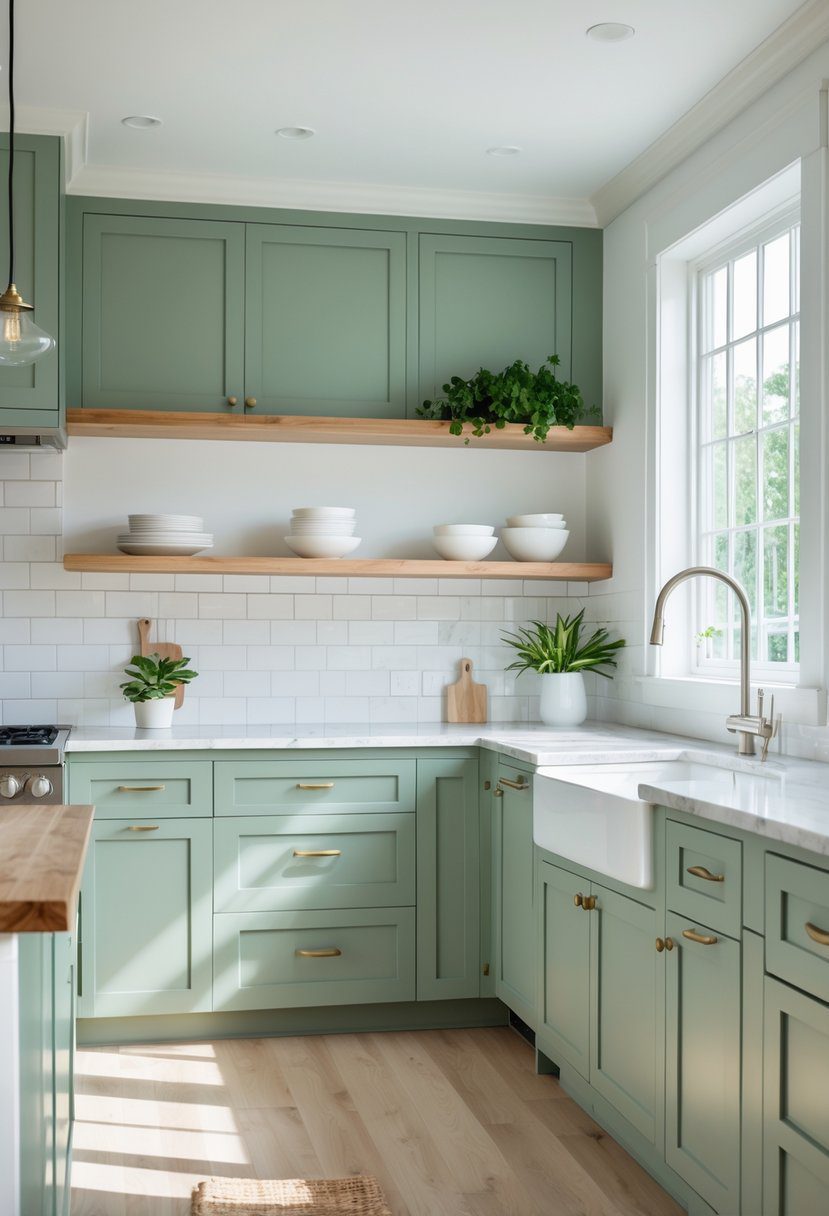
Sage green offers flexibility in design, fitting both modern and classic kitchens. The right shade, cabinetry, countertops, and backsplashes work together to create a balanced and inviting space. Color coordination is key to making the kitchen feel fresh yet timeless.
Choosing the Perfect Shade
Sage green comes in a range of tones, from light and muted to deeper, earthier versions. Lighter shades brighten rooms with less natural light. Darker tones bring warmth but can make a small kitchen feel smaller.
It’s important to test paint samples in different lighting conditions. Daylight and artificial light can change how the color appears. A soft, muted sage is often the most versatile and calming choice.
Choosing a shade that matches the style of the home helps. For example, cooler green undertones suit modern kitchens, while warmer sage tones fit rustic or farmhouse designs.
Pairing Sage Green with Cabinets and Countertops
Sage green cabinets are a popular feature because they add color without overwhelming the room. They look great with brass or matte black hardware for a trendy touch.
Countertop choices greatly affect the kitchen’s overall look. Marble and quartz with subtle veining complement sage green nicely by adding texture and lightness. Dark granite or concrete countertops create contrast but need good lighting to avoid darkening the space.
Mixing materials can work well. For example:
| Cabinet Color | Countertop Option | Effect |
|---|---|---|
| Light sage | White quartz | Bright, airy |
| Dark sage | Marble with blue veins | Elegant, classic |
| Medium sage | Concrete or dark granite | Bold, modern |
Incorporating Backsplashes and Tiles
Backsplashes offer a chance to add texture and pattern without clashing with sage green. White subway tiles with a matte finish keep the look clean and timeless.
For more interest, consider glazed or patterned tiles in soft neutrals, blues, or even muted gold. Avoid overly bright or bold colors, which can compete with the calming sage green.
Natural stone or textured tiles also work well. They add earthiness and depth to the kitchen, which pairs nicely with sage’s organic feel. Placement behind stoves or sinks highlights these practical areas.
Creating Cohesive Kitchen Color Schemes
Combining sage green with other colors creates a kitchen that feels intentional and inviting. White is the safest partner, brightening the space and providing contrast.
Soft grays and warm wood tones complement sage green’s earthy quality without overpowering it. Some homeowners add muted blush or navy accents for subtle color variety.
Furniture, lighting, and decor should pick up colors from the scheme for harmony. For example:
- White walls and ceiling
- Sage green cabinets or island
- Light wood floors or shelving
- Brass fixtures
- Gray or beige textiles
This approach maintains a balanced space where sage green stands out as the key color without overwhelming the room.
For more ideas on pairing sage green with kitchen elements, see this guide to sage green kitchen design.
Expert Styling Tips for Sage Green Kitchens
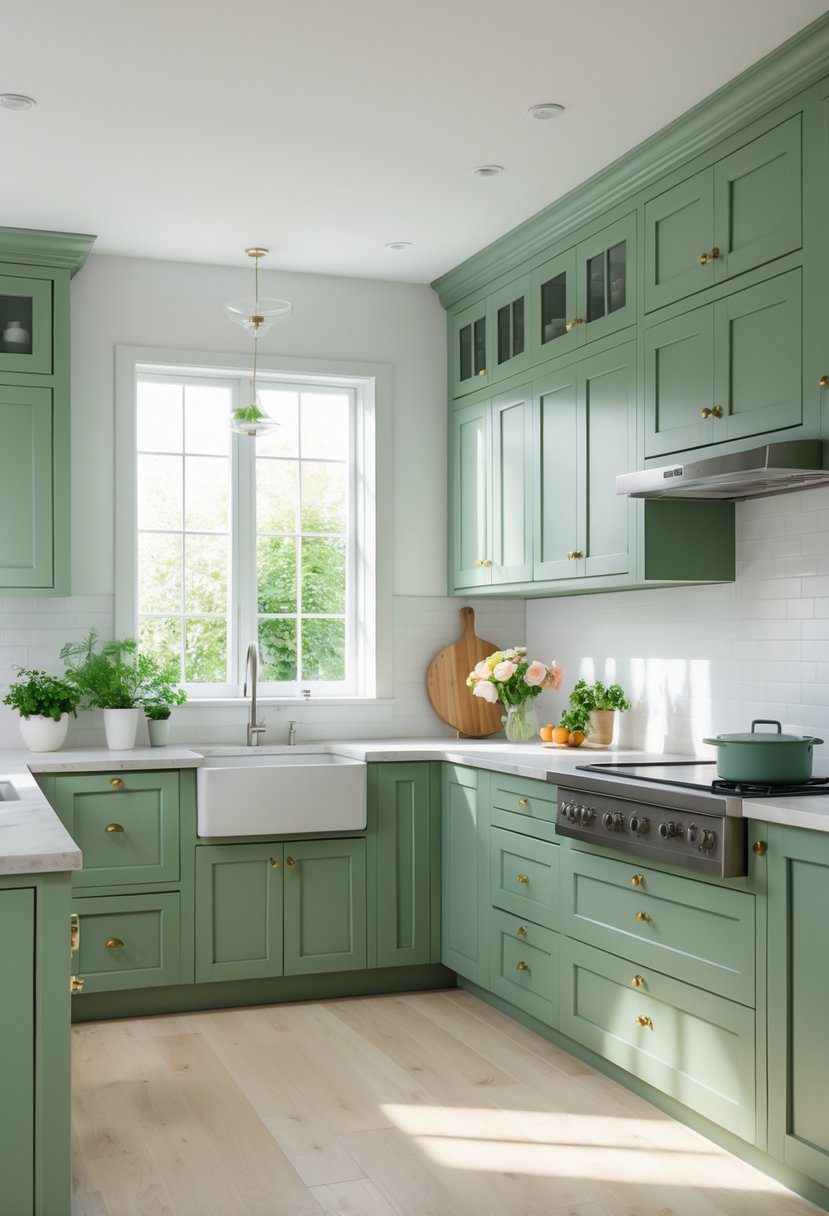
Sage green works well with a variety of decor styles, metals, and lighting choices. To make the color stand out, it is important to consider how these elements come together. Thoughtful planning around furniture, fixtures, and natural light can enhance the kitchen’s calm and inviting feel.
Modern and Classic Decor Ideas
Sage green fits both modern and classic designs. For a modern look, pair sage cabinets with clean lines and simple shapes. Think sleek countertops and minimalistic hardware. Use neutral tones like white or soft gray on walls and floors to keep the space airy.
In classic kitchens, add warmth with wood accents or vintage-inspired details. Open shelving or farmhouse sinks complement sage’s earthy tone. Balance bold backsplash patterns with plain sage surfaces to avoid clutter. Rugs or curtains in muted colors keep the space cozy without overwhelming the green.
Best Metals and Fixtures for Sage Green
Brass, bronze, and matte black fixtures highlight sage green effectively. Brass brings warmth and elegance, especially in handles, faucets, and lighting.
Matte black creates a strong contrast that sharpens edges and adds depth. It works well for modern or industrial styles. Bronze fixtures offer an earthy feel that complements the green’s natural roots.
Choosing quality fixtures with simple designs ensures the focus stays on the sage cabinetry. Mixing too many metals can disrupt the harmony, so sticking to one or two complements the color best.
Natural Lighting and Space Enhancements
Natural light boosts the soft, soothing quality of sage green. Large windows or skylights help the color appear fresh and welcoming.
Using light-colored countertops and backsplashes can reflect sunlight and enlarge the feel of the kitchen. Mirrors placed strategically near windows also increase brightness.
To keep the space open, avoid heavy curtains or dark wall colors. Light wood or pale tiles enhance the airiness. Bright task lighting in work areas supports functionality without overpowering the soft green tones.
For practical use, layered lighting—combining overhead lights with under-cabinet lighting—creates a balanced atmosphere that adapts throughout the day.
Direct attention to the fumes of sage green’s gentle tone while maintaining brightness and openness creates a balanced, stylish kitchen space.
Explore more ideas for fresh, earthy sage green kitchen designs.

